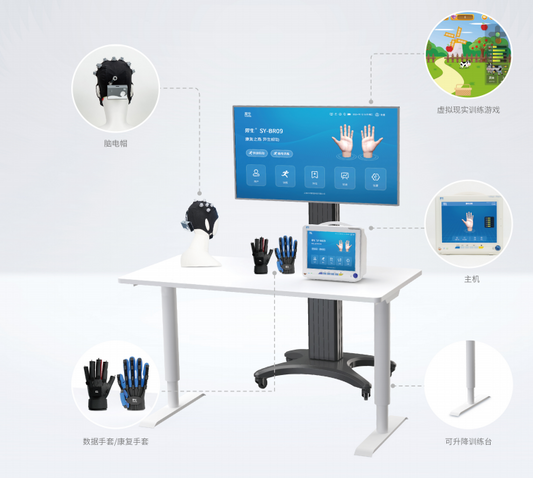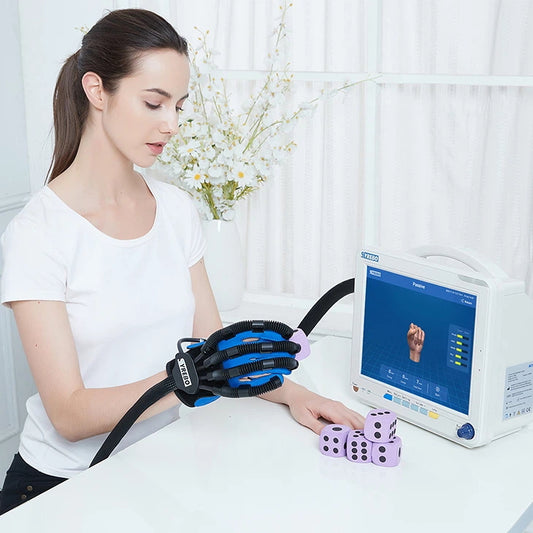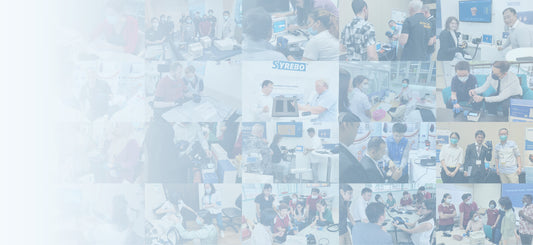What Are Anoxic and Hypoxic Brain Injuries?
What is brain injury?
Anoxic brain injuries are caused by a complete lack of oxygen to the brain, which results in the death of brain cells after approximately four minutes of oxygen deprivation.
Hypoxic brain injuries are brain injuries that form due to a restriction on the oxygen being supplied to the brain. The restricted flow of oxygen causes the gradual death and impairment of brain cells.

What causes anoxic brain injury?
- Stroke
When someone experiences a stroke, a portion of the brain doesn't receive adequate blood and oxygen, leading to the potential death of affected brain tissue. A stroke occurs when there is a reduced oxygen supply to brain tissue that is blocking perfusion. Learn more about stroke.

- Cardiac Arrest
One of the heart's responsibilities is to keep blood circulating through the body. If the heart stops working properly, oxygen and other vital nutrients may no longer be circulated at a rate that adequately supplies other organs, including the brain.
- Low Blood Pressure
Low blood pressure, also referred to as hypotension, doesn’t always put your health in jeopardy. But when the pressure drops very low, the amount of blood and oxygen to the brain is also compromised and can lead to an anoxic brain injury. Very low blood pressure can also lead to cardiac arrest.
- Near Drowning
When water fills the lungs, the supply of oxygen to the rest of the body may drastically decrease. Without oxygen, cardiac arrest, anoxic brain damage, and even death may occur.
- Carbon Monoxide Poisoning
Carbon monoxide is an odorless gas that starves the body of oxygen, prohibiting it from getting to your brain, lungs, and other vital organs. Having a carbon monoxide detector in your home can alert you when this gas is present at dangerous levels. When someone has suffered from carbon monoxide poisoning, they tend to feel dizzy or nauseous. Carbon monoxide poisoning can lead to loss of consciousness and even death.
- Choking
If a choking event occurs, one's airway may be partially or completely compromised. Without immediate treatment to dislodge the object, generally with the Heimlich maneuver, one could suffer devastating effects.
- Drug Overdose
Different drugs, both recreational and prescription, can affect the various mechanisms needed to keep one breathing properly. Prescription opioids, for example, may slow one's heart rate and respirations to an extent where they stop breathing, leading to an anoxic brain injury, coma, or even death.
What is the ICD-10 code for suspected anoxic brain injury?
ICD-10 code G93.1 for Anoxic brain damage, not elsewhere classified is a medical classification as listed by WHO under the range - Diseases of the nervous system.
Anoxic brain damage, not elsewhere classified
Excludes1: cerebral anoxia due to anesthesia during labor and delivery (O74.3)
cerebral anoxia due to anesthesia during the puerperium (O89.2)
neonatal anoxia (P84)
Life expectancy after anoxic brain injury
The overall life expectancy for patients with anoxic brain injuries or hypoxic brain injuries can vary based on the severity of the brain damage from lack of oxygen and is something that should be discussed with a patient’s physician. Life expectancy may be reduced by eight to nine years after an average hypoxic brain injury.
Can someone recover from an anoxic brain injury?
An anoxic or hypoxic injury to the brain is irreversible. This means it is not possible to bring back dead brain cells. Therefore, a full recovery from severe hypoxic anoxic brain injury is rare. However, many patients with mild or early-stage hypoxic anoxic brain injuries can make a partial recovery or even a full recovery of brain function. Treatments can help people who have suffered mild anoxic brain injuries.
The Brain Injury Association of America says treatment for brain injury is:
- Acute (emergency or immediate treatment received in the intensive care unit of a hospital after the brain injury). For example, therapeutic hypothermia (lowering of the body temperature to reduce the brain’s demand and supply of oxygen.
- Post-acute (long-term treatment for the lingering effects of the brain injury). For example, working with rehabilitation specialists such as physical therapists and occupational therapists to improve outcomes.
The type of care a brain injury survivor needs depends on various factors, such as the severity of the brain injury and their symptoms.
What is the mortality rate for anoxic brain injury?
Survival rates after severe anoxic brain injury are, unfortunately, very poor. For example, anoxic brain injury is a significant cause of mortality in people who suffer a cardiac arrest. Survival after cardiac arrest is around 22% in-hospital and 10% out-of-hospital.
Studies have shown that the severity of the anoxic brain injury has a significant effect on survival rates:
- Severe hypoxia is associated with mortality rates of 49% and disability rates of 69%
- Mild hypoxia is associated with mortality rates of 30% and disability rates of 47%
Other studies have shown that 75% of patients have a poor outcome after hypoxic brain damage. Around 10% need further acute care in the hospital, 40% are discharged to nursing care facilities, 22% need subsequent rehabilitation, 18% return home, and around 10% die after an anoxic hypoxic brain injury.
Understanding Physical Recovery Tools After Brain Injury. Book now for a free consultation!







